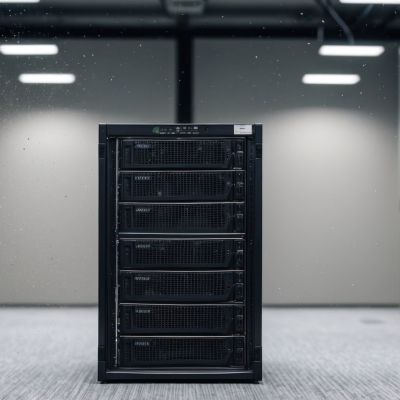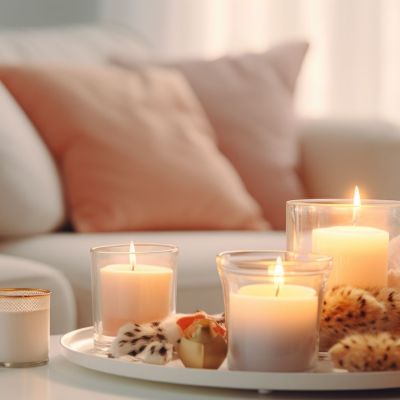Label Like a Pro: Simple and Effective Labeling Hacks
It’s been a long journey—years of learning, experimenting, and organizing both at home and with others. And now, I’m bringing everything I’ve gathered together in one place, online, so you can benefit from it too!
My Ultimate Organizing Tips!
Instead of digging through years of archives to find individual tips, I’m putting together a massive, easy-to-navigate post that gathers the best of the best! This will be your go-to resource for organizing projects of any size.
Label Like a Pro: Simple and Effective Labeling Hacks
I’ve tried almost every label on the market—from plastic tags to label makers to stickers and chalk markers—and while each has its time and place, there are a few tried-and-true favorites I keep coming back to. Want to know which ones I rely on for time, cost, and practicality? In this post, I’ll share three foolproof labeling methods that don’t require fancy equipment.
Practical, Everyday Storage Solutions
If there’s one thing I’ve learned over the years of raising three kids and staying organized, it’s that storage can get expensive and our needs are always changing. While I’ll always appreciate aesthetically pleasing storage, practicality and flexibility have become key for me. I’ve discovered a handful of products that never fail to deliver, and I want to share these gems with you in my ultimate storage resource guide.
But let’s jump into Part 3 of this four-part series: Label Like a Pro: Simple and Effective Labeling Hacks.
I’ve always loved the creative side of organizing, and labeling allows me to explore all sorts of craft tools, papers, vinyl, and embellishments. Labels can be both functional and visually appealing, adding an extra touch to a project while keeping everything neat and organized.
Sometimes, I dedicate time to making my organizing projects more creative, but for most tasks, I stick to three simple, reliable labeling methods. But before I dive into those, let’s quickly explore the why behind labeling.
Why We Label
Labeling is a personal choice—there’s no one-size-fits-all approach. Generally, we label to make identification easier and ensure clarity within our homes. Here are a few reasons you might want to label:
- To indicate ingredients in food containers, especially for allergies and sensitivities.
- To label leftovers with dates so you know when they expire.
- To mark items as fragile or hazardous.
- To identify the contents of storage containers.
- To differentiate between similar items.
- To help children know where things belong or where to find what they need (toys, snacks, clothes, etc.).
- To mark personal items to avoid confusion between family members.
- To create uniformity or understanding across your household.
Ultimately, the need for labeling depends on how your household functions and the dynamics between everyone living there. Labels can be a game-changer, but they’re not always necessary.
For example, I used to label all my clear pantry and fridge containers, but over time I realized that I was just changing the contents weekly, and the labels didn’t really add any value. So now, I simply write the purchase date on the bottom of containers with a dry erase marker—easy and low maintenance (unless there’s an allergy concern, of course).
For a family of five, though, labels are crucial. They make it easier for everyone to pitch in and put things back in their proper place. Labeling cleaners, drawers, and storage bins has helped me avoid constant questions and confusion.
So, What Are the Best Labeling Methods?
Now that you’re ready to start labeling, let me share my top three labeling methods that have never let me down!
1. Label Maker
This one’s a no-brainer but still incredibly effective. I’ve used many label makers over the years, but after my old one broke (thanks to a few accidental drops), I went searching for a good replacement. I found the Brother P-Touch label maker for under $20, and I’m loving it. It’s budget-friendly, portable, and offers the essential features I need, including a couple of font options and easy-to-replace cartridges.
Label makers are perfect for almost any project. They’re quick, user-friendly, and produce labels that adhere to just about any surface. Plus, the tapes are semi-waterproof, so they hold up well in kitchens and bathrooms. Here’s how I use mine around the house:
- Labeling Cords: Wrap a label around the base of cords to identify which device or person they belong to.
- Labeling Cleaning Bottles: I make most of our cleaners, so I use the label maker to mark the type and purpose of each one.
- Labeling Canisters: Great for identifying contents like baking powders, coffee beans, and specialty food items.
- Labeling Shelves/Drawers: Helps my kids know where things go and keeps things organized.
- Travel Toiletries: Labels fit perfectly around those small travel bottles—no more mix-ups between shampoo and conditioner!
- Spice Jars: A must-have if you store spices in jars instead of original containers.
- File Folders: I prefer a neat label over my own handwriting for reusable folders.
I usually stick to clear label tape for a seamless look, but white label tape is another solid option for a more professional, polished appearance.
2. Adhesive Label Holders
When I want something more polished for longer-term use, I turn to adhesive label holders. These are perfect for bins or boxes with rough surfaces or unusual shapes where label tape might not stick well. I use these holders for a more refined look in areas where labels will be visible.
Two of my favorites are the Martha Stewart Bookplates and Bigso Adhesive Label Holders. They’re adhesive, versatile, and can be easily customized with printed labels. These holders are great for Target’s Y-Weave baskets, rattan bins, or even canvas storage containers. And if the adhesive starts to wear off, a little hot glue will fix it right up.
3. Clip-On Label Holders
Clip-on labels are a new favorite of mine! They’re a fantastic option for larger bins and baskets because they’re easy to use and stay in place. Simply clip them on, and you’re good to go. These are ideal for bins that get a lot of use—think toys, linen closets, or tool storage.
I love using these for large baskets of kids’ toys. They offer enough space to print out pictures or detailed labels, making it easy to identify the contents. I also use them on woven baskets and canvas bins in cabinets and closets, as well as for organizing our tool bins.
Vinyl Labels and Dry Erase Markers
Lastly, I wanted to briefly touch on vinyl labels. Although I don’t use them as often anymore due to time constraints and the mess of my craft machine, I still appreciate the durability and sharp appearance of vinyl labels. They’re waterproof and long-lasting, making them perfect for areas that require more permanent identification.
Another time-saving option I often rely on is dry erase or chalk markers, especially in the kitchen. I use them on clear plastic and glass containers to note the purchase date or expiration of food items. They’re easy to erase when the contents change, making them a flexible and low-maintenance option for labeling.
With these three labeling techniques, you’re set to take your organizing game to the next level! Whether you’re using a label maker for quick fixes, adhesive holders for a more polished look, or clip-on labels for easy access, these methods have been my go-to solutions for years. Happy labeling!




